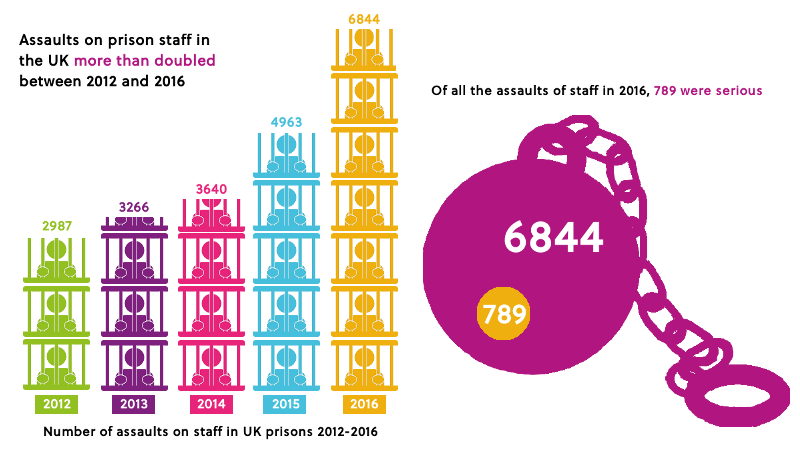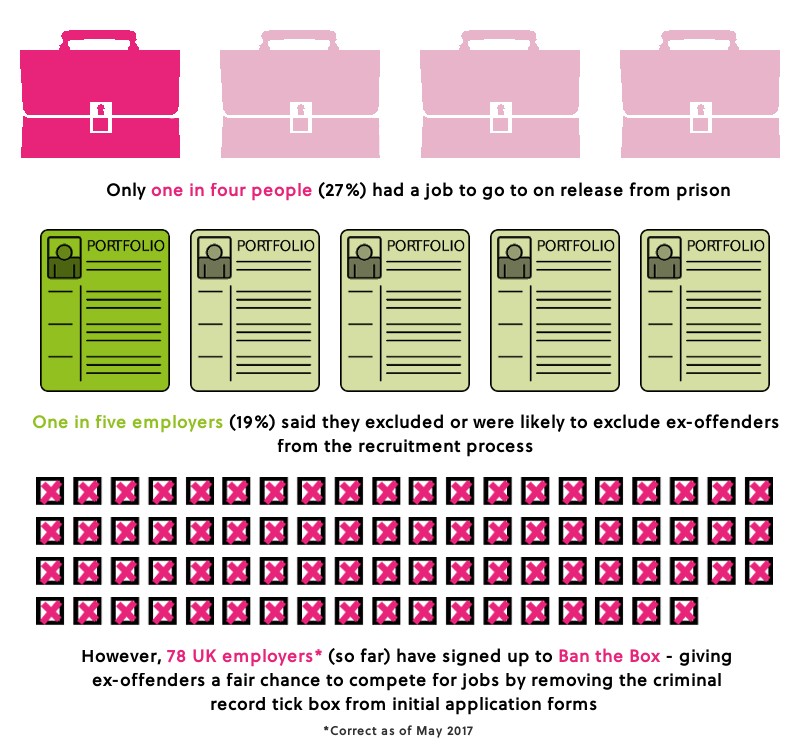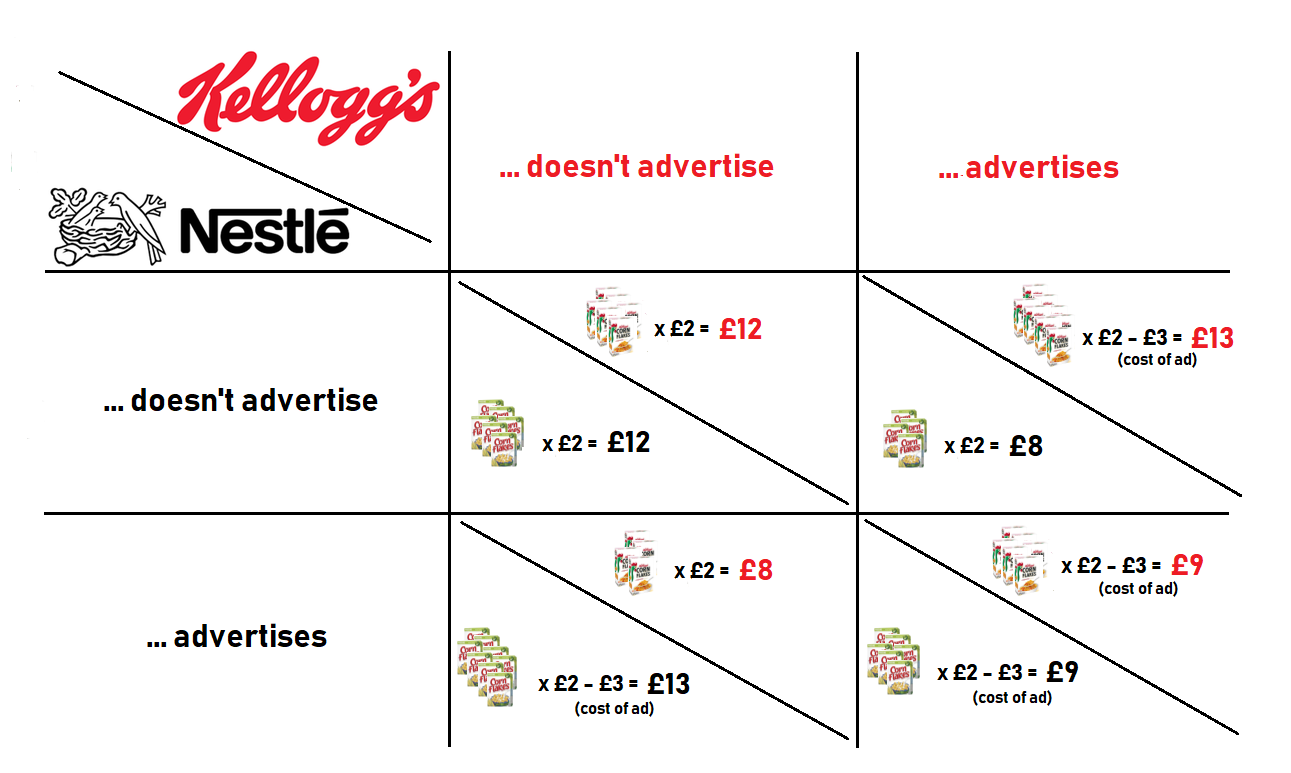If a person commits a crime, they should be punished by going to prison, right? But is this the most suitable outcome for all types of offenders? What about those who have families dependent on them? This needs a little more thought...
Does prison work?

Prisons exist for several reasons: to punish people; to prevent crime by trying to put people off from either repeating or copying an action; to protect the public, and to get criminals to make up for the bad thing they did.
Dr Shona Minson works in the University of Oxford’s Centre for Criminology and is an expert on prisons. She worked in law before starting her research, which means she knows a lot about different parts of the justice system.
'When I moved into academic research, I was particularly interested in children and families within the criminal justice system and how they’re treated,' she explains, 'and [I] became aware that when children are separated from their parents because their parents are sent to prison, no-one really thinks about what it’s going to be like for them and nobody makes sure that they are being well looked after now that they don’t have their mum or dad taking care of them.'
Effects on families
Dr Minson believes there are some key problems with the prison system which mostly stem from its lack of funding and staffing. As a result, many people who are released from prison often go on to commit further crimes.
'If you think someone is a very dangerous person and you put them in prison, then yes, you’ve got protection for society,' she says.
'But [when it comes to] reform and rehabilitation - i.e. helping people to change their behaviour - prison doesn’t really work for that. At the moment, our prisons are really unsafe. They are hugely overcrowded and understaffed.'
'There has been a reduction of investment in prison staff and the prisons budget itself. At the same time, there has been an increase in more punitive sentencing (stronger punishments). This doesn’t help to achieve anything.'
'People have a view that if somebody has done something bad, send them to prison. You’ve got to ask, "Well, what do we want that person to do because of what they’ve done wrong?" 'If we want them to change, and not do it again, it’s quite unlikely that sending someone to prison is going to do that.'
'Prison itself isn’t a nice place to be - and it’s not a particularly helpful place to be for people who might be suffering from mental health problems. Their situation might improve more with psychiatric treatment and/or support.'
'A lot of the prison population have already suffered huge trauma in their lives,' explains Dr Minson. 'More than 50 per cent of women in prison have said they’ve been abused or subject to domestic violence. Many have not been able to finish their education. A lot have a mental illness. Quite often we’re imprisoning rather than treating people with health problems. I think there’s a lack of understanding of what has caused someone to commit an offence - and therefore how we best move on from that.'
There are also wider issues: if a parent is put in prison that will have an effect on their children and their family.
'When a primary carer goes to prison, it’s devastating for children. It has consequences that quite possibly affect them for the rest of their lives,' says Dr Minson. 'Prison and punishment have been very much treated as something between the state and the offender: somebody breaks the law, therefore the state has a right to punish them for breaking the law. It’s only been quite recently that the law has meant that we consider other people, like victims.'
'But, of course, we live in families, and so when someone is punished that’s going to affect a lot of people, not just themselves.'

Alternatives to prison
So if prison isn’t necessarily the best thing in all situations, what alternatives are there?
Dr Minson thinks there could be better and increased use of sentences in the community. 'For example, things like electronic tagging whereby offenders are on a curfew....their lives would still be very restricted but they’d be able to live in the community, which means if they’re parents or if they’ve got a job or if they care for elderly people they can still do all those roles.'
'Other types of community sentences include unpaid work, to give something back to the community. People can be fined i.e. people can be made to pay back if [their crime is] about stealing money.'
Prison can affect lots of innocent people indirectly, it’s very expensive, and there are other ways in which people can be punished. On the other hand, it's clear that a prison sentence is appropriate in some cases, for serious crimes such as murder, or in situations where the person is a danger to the public and needs to be in prison for safety’s sake.
'Of course, there are things that need to be punished,' says Dr Minson, 'but are we, as a society, cutting off our nose to spite our face by using this huge amount of money to send people to prison?'
In other words, by trying to punish people, is society unintentionally punishing itself because of the financial cost? But maybe this is a price worth paying to show that crime is taken seriously? What do you think?
French writer, Victor Hugo (1802-1885) believed in the power of education to give someone the best start in life. He once said: “He who opens a school door, closes a prison”.
French writer, Victor Hugo (1802-1885) believed education could give someone the best start in life. He once said: “He who opens a school door, closes a prison”.
Nature or nurture: what makes someone a criminal?
This short video tackles this age-old debate by exploring why a set of identical twins, Lucky Lyle and Troubled Tim, end up with totally different personalities. Is it environment or genetics? Or perhaps both?
The cost of UK prisons: what are the alternatives?
The UK prison system is expensive: in 2016-17 the cost per prisoner was £35,571! With an average prison population of 84,750, that comes to a total cost of around £3bn per year! So is the UK prison system worth the public money spent on it? And what are the alternatives?
A paper by the University of Glasgow and the Scottish Centre for Crime & Justice Research gives four key reasons for imprisoning people who have committed a crime: to protect the public, to punish the offender, to serve as a deterrent to the offender and others, and to rehabilitate. Let’s have a look at each of these in turn.
All stats below refer to the UK.
Protecting the public
Generally, imprisoned offenders are effectively kept away from the wider public. In 2015 -16 there were only 8 escapes during escorted journeys - that is journeys to and from courts, hospitals etc. This was down from 13 in 2011-12. Absconds, i.e. a failure to go to prison at a certain time as part of bail conditions, have also been on a downward trend since 2003-04. But is this enough?
Prisons operating beyond their capacity can lead to violence and unrest. In 2016-17 there were 78,800 certified prison places compared to an average population of 84,750. Between 2012 and 2016, assaults on prison staff in the UK more than doubled. And, of all these incidents in 2016, 789 were serious - so is the justice system doing enough to protect prisoners and those employed to guard them?

Punishing the offender
The most common prison sentence length in England and Wales is 4 years or more for adults and 1-4 years for non-adults. It’s difficult to tell from the stats alone whether these sentences were appropriate in every case for the crimes committed; many moral, practical and legal considerations would have been taken into account by the judge at the time of trial. But given that these sentences are a significant proportion of prisoners’ lives, they certainly seem like a punishment.
Many argue that a lack of prisoner safety, access to purposeful activities, and help when they leave the institution should not be part of the punishment though. A recent Observer investigation found that 80 out 118 adult prisons in England and Wales were providing insufficient or poor standards in at least one of those three areas. 44% were providing poor or insufficient safety and almost half offered insufficient or poor access to meaningful activities. The latter in particular might have serious consequences for offenders’ rehabilitation, as we will discuss later.
So are offenders punished beyond their sentence through poor conditions in jails? And could alternatives such as community service provide better outcomes?
A deterrent to the offender and others
In 2014, 26% of male and 18% of female offenders reoffended during the one year follow-up period. Does it follow that harsher prison sentences lower reoffending rates?
According to a report by the Prison Reform Trust, short prison sentences are less effective than community sentences at reducing reoffending. This is because it was found that people serving prison sentences of less than 12 months had a reoffending rate seven percentage points higher than similar offenders serving a community sentence.
The report also finds that reoffending by all ex-prisoners costs the economy between £9.5bn and £13bn annually, with £7bn-£10bn of that coming from former short-sentenced prisoners.
So how can this figure be reduced? The key seems to lie with rehabilitation programmes, which we'll look at next.

To rehabilitate
Carefully delivered rehabilitation programmes prevent reoffending and could help former offenders get a new start into their lives after prison.
Finding a job after prison is a difficult task though: only one in four people had a job to go to on release from prison, and one in five employers said they excluded or were likely to exclude ex-offenders from the recruitment process.
But there are things that can be done to help prisoners gain a job and make them less likely to reoffend: a US study showed that prisoners who enrol in college/university classes have a 50% lower reoffending rate than prisoners who do not take any classes.

Apart from formal education, other programmes could benefit prisoners too. Recent research from the University of Oxford found that a 10-week yoga course improved prisoners’ mood, reduced their stress levels, and helped them perform better on a task related to behaviour control such as impulsivity and attention.
Another study using Scottish data found that the arts play an important role: learning to play music, for example, and then performing in front of audiences, encourages the improvement of verbal and written literacy skills. In addition, participants learned to work more effectively and developed self-confidence. All this together, the authors of the study argue, motivates prisoners to distance themselves from crime in the future.
So what’s the verdict?
Prisons are expensive but they serve an important role in society. While they protect the wider community as it stands at the moment, it appears that more needs to be done to keep both prisoners and guards safe. One cost-effective option could be rehabilitation programmes: they engage prisoners, help them learn new skills, and make them less likely to re-offend. Setting up these programmes costs money initially, but by decreasing reoffending rates prison populations could be reduced, saving costs in the long-term. Educational programmes could also help former offenders get a job, thereby making them contributors to society and boosting the economy.
So what do you think? Can you think of any alternatives to the current prison system?
The setup
So imagine that there are two suspects - let's call them Alice and Bob - and they have been arrested and imprisoned for a minor offence. Let's say, for trespassing on private property. The police suspect that, in addition to the minor offence, Alice and Bob committed a more serious crime: they stole some goods. However, the police do not have sufficient evidence to convict Alice and Bob of theft. Alice and Bob are held in separate prison cells and are interrogated with no means of communicating with each other. The police offer each of them a deal: If you confess to theft and your partner denies the crime, you will be released and your partner will be sentenced to three years in prison. If both of you confess, then you will each be convicted of theft and be sentenced to two years in prison. If you both deny the theft, you will each be sentenced to one year in prison for trespassing.
Now, we assume that Alice and Bob will each choose to confess or deny solely based on their own self-interest and that they have neither loyalty to each other nor the opportunity to punish or reward the other one for their decision.
In the language of Game Theory, this setup is called a non-cooperative game, and Alice and Bob are called players. The game is non-cooperative because we assume that the players are purely rational and self-interested and do not have to worry about their decision affecting future interactions.
The solution
So Alice and Bob can each do one of two things: confess to the theft or deny it. We can summarize the possible outcomes in the following table:

In Game Theory this table is called a pay-off matrix and it can help to predict the outcome of the game.
Looking at this table we can see that, in order to minimize the total number of years spent in prison, both Alice and Bob should deny the theft. However, if we consider the problem from Alice's and Bob's perspectives individually, we can see why they would choose to confess, betraying each other.
From Alice's perspective, if she thinks that Bob will deny the theft, then she should confess, so that she will be released. If she thinks that Bob will betray her and confess, then she should definitely confess, since two years in prison is better than three. Bob is in the exact same position: He should confess if Alice denies the theft, and he should also confess if she confesses.
Confessing results in a better pay-off for Alice, regardless of Bob's decision and vice versa. Hence, confessing is the dominant strategy for each of them.
The dilemma is that cooperating would have led to a better outcome - not only for the pair as a whole, but also for each of them individually - but each of them could always gain by betraying the other. In game theoretical terms, one says that the globally optimal solution - both Alice and Bob denying the theft - is unstable. The non-cooperative outcome of the game - both Alice and Bob confessing to the theft - is an example of a Nash equilibrium, named after the American mathematician John Forbes Nash Jr.
Real-world applications
Now, for most of us the prison setting is not a scenario that we'll personally encounter. There are however many examples in everyday life that follow the same principle.
One example from economics concerns marketing of a product.
Consider two companies that make identical products. To be concrete, let's take two competing cereal manufacturing companies that produce identical cornflakes: Kellogg's and Nestlé.
Both companies need to decide how much money they spend on advertising. Since the products they make are the same, advertising will have a huge impact on sales.
For simplicity, let's assume that there are no other cornflakes brands on the market and that Kellogg's and Nestlé each have only two options to go about their cornflakes marketing: to advertise or not to advertise.
If neither company advertises, consumers will pick cereal boxes randomly: roughly half of them will buy Kellogg's and the other half will buy Nestlé. Kellogg's and Nestlé will end up sharing the profit margin for cornflakes.
Now if Kellogg's chooses not to advertise, then Nestlé will benefit greatly from advertising. If Nestlé is the only one to advertise, then its profit will increase, outweighing the cost of advertising, while Kellogg's will lose profit.
If both Kellogg's and Nestlé advertise, then the effect of advertising cancels out: consumers will choose cornflakes boxes at random. The two companies share the profit margin roughly equally, but they are left with the cost of advertising, putting them both in a worse position.
Although the optimal solution would be for neither company to advertise their cornflakes, individually, each company sees that they can always make more money by advertising. Both Kellogg's and Nestlé advertising is the Nash equilibrium in this scenario and is the likely outcome if we assume non-cooperative behaviour from both companies.

6 unusual things that are banned in UK prisons
-
Chewing gum
-
There are lots of reasons chewing gum is banned in prison. If you’ve ever looked under a desk at school you know just how messy it can be. It would be pretty gross to have chewing gum all over the floors and walls of the prison, and it could also be used to block the locks on cell doors. And more critically, resourceful prisoners could use it to make impressions of guards' keys if they’re planning a great escape. For many of the same reasons, Blu Tack is banned, and apparently prisoners resort to using toothpaste to stick up posters and family photos – making for quite a minty cell smell!
-
-
Sports kits
-
Prisoners grouping up into gangs can cause serious issues in prison. For this reason, clothes branded with particular sports team logos or national flags aren’t allowed. The idea is to prevent prisoners from identifying people they might gang up with based upon a shared sports team or national identity. There are other rules on clothing too. In the movies, prisoners are quite often shown in black and white striped uniforms – but this couldn’t be further from the truth! In quite a lot of prisons, inmates can wear their own clothing (as an earned privilege), but black and white clothing is banned as it could end up with a prisoner being mistaken for a guard!
-
-
Certain books
-
The government has recognised that reading can help rehabilitate offenders, but there are still a few restrictions on books in prison. Firstly, in some prisons inmates can’t bring books with them when they arrive because the paper can be used to smuggle in drugs. Also, until 2015, prisoners were only allowed up to 12 books in their cell – even if their friends and family sent them more. This rule was changed, but inmates are still only allowed two boxes worth of stuff in their cell – so they probably don’t have the complete works of Shakespeare! Books ordered by or for prisoners must be from 6 approved retailers, included Waterstones and WHSmiths, and some books are completely banned. This is usually because the prison governor thinks they could have a negative effect on the prisoner’s physical or mental condition, for example if they are extremist or could threaten safety.
-
-
18-rated films
-
As part of the restriction on perks in prison, all 18-rated DVDs have been banned in UK prisons since 2013. Apparently, this ban only applied to DVDs - so if they can find one on Film4 that’s allowed! There are other ways inmates can entertain themselves. Some prisoners with special privileges are allowed game consoles, but any console that connects to the internet is banned – so they have to go retro with consoles like the PS One or Nintendo GameCube. Like with DVDs, 18-rated games aren’t allowed, but that doesn’t stop them having a good game of Mario Kart!
-
-
Anything rechargeable
-
Inmates can’t have rechargeable batteries or anything that uses them (except toothbrushes) because, in theory, they can be adapted to recharge illegal mobile phones. You’d think this wouldn’t be too much of an issue, since mobile phones are banned. But it was reported in 2016 that the number of times banned items were thrown in to prisons had more than doubled in the last two years. People come up with pretty clever ways of disguising these items, like hiding mobile phones in juice cartons and tennis balls and launching them over the prison wall!
-
-
Spiral bound notebooks
-
Education is becoming more common in prisons, but there are lots of rules on what can be brought into the classroom. Spiral bound notebooks present a major threat. Firstly, they can be cleverly manipulated to pick the locks on prison doors. Secondly, they can be used to construct sharp, potentially deadly weapons. There are plenty of other seemingly safe items that are banned to prevent injury. Most prisoners will want to keep personal jewellery on them, like wedding rings, but if it’s too chunky it’s not allowed. However, whilst banning items usually keeps prisoners safe, the 2017 ban on smoking in long term and maximum security jails could potentially do the opposite. Around 80% of inmates in UK prisons smoke, and a complete ban on smoking is already causing riot and unrest amongst prisoners.
-
Does prison work?
-
Prisons help protect the public from dangerous criminals
They help to do this in at least three ways. First, when a criminal is in prison, they are physically prevented from harming the public. Second, some argue that imprisonment represents an effective punishment, which serves to convince offenders that crime has serious consequences. Third, the possibility of imprisonment prevents many people from committing crimes because they're afraid of going to prison themselves. That said, not all criminals in prison are dangerous e.g. those who have not paid their TV licence. In such cases, could other punishments be more appropriate and less costly? These alternatives could include community services (unpaid work for the good of the community) or sentences in the community, which could include things like electronic tagging whereby there is a curfew. It's about striking a balance but this can be complicated. What do you think?
-
Many prisons lack support for inmates and staff
Although prison might help to protect the public in some ways, it doesn’t quite manage to keep those working and residing in prisons away from risk. Due to lack of funding, under-staffing and overcrowding, many prisons are unsafe for prisoners and guards. What’s more, people who are released from prison often go on to commit further crimes. By keeping prisoners in a violent environment and not being able to offer them enough support in improving their lifestyle when they get out, many argue that prisons fail to bring about real change in offenders’ lives.
-
Prison can be a space for rehabilitation
There's increasing consideration for how prison architecture affects inmates' mental health. Bastøy Prison Prison and Halden Prison (Norway) are good examples of architectural designs that try to create a small community and encourage inmates to better integrate within it. They create a safe and guarded environment in which prisoners can learn or re-learn to be part of a society, care for themselves and have a purpose. Offering meaningful activities to prisoners such as a job or a degree, and helping them find a job when they get out of prison, have been shown to reduce the chance that they commit a crime in the future. What’s more, a lot of prisoners suffer from mental health problems or traumas after violent events. Addressing these issues is also critical. Recent studies show that tending to inmates’ well-being by offering them access to sports or music classes and outdoor activities might also help to improve their self-control and self-confidence.
-
It's not just the criminals who are affected
Offenders' families, and in particular children, are affected too. The imprisonment of a parent could mean that a child has to live somewhere else, potentially with strangers; be separated from his or her siblings and change school - all whilst being separated from his or her parent. The parent might also be imprisoned far away making it difficult to organise visits. Overall, this can be distressing for a child, who needs a stable and safe environment. It can potentially have a negative impact on their mental health, future life, and inclusion in society. Many argue that a child should not have to pay for his or her parent's crime in this way. UK law is starting to recognise this and judges have to adapt their sentences, particularly when the criminal is a single parent or the sole guardian of a child. They have to consider the impact on the child of the punishment of the parent, and where possible, imprisonment is suspended or turned into a community order.